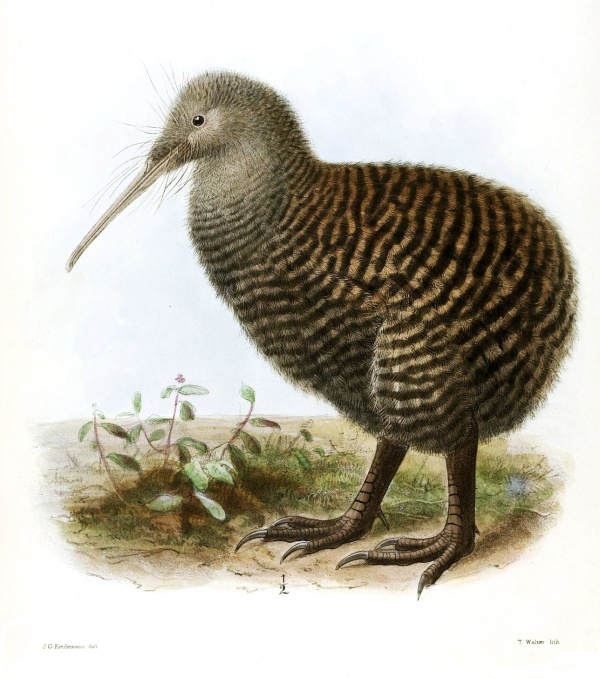Facts About Great spotted kiwi
The great spotted kiwi, also known as the great grey kiwi or roroa, is a unique, flightless bird endemic to New Zealand's South Island. It is the largest species of kiwi, but it faces significant threats from invasive predators such as dogs, ferrets, cats, and stoats, as well as habitat destruction. Despite having some natural defenses, its population has declined by 43% over the past 45 years, leading to its classification as a vulnerable species.
These kiwis are noted for their aggressive nature and nocturnal habits. They primarily feed on invertebrates and plants. Their breeding season extends from June to March, during which they lay the largest egg in proportion to body size of any bird. After an incubation period of 75 to 85 days, the chicks hatch and are left to fend for themselves as the parents abandon them shortly after hatching.
From a taxonomic perspective, the great spotted kiwi is one of five kiwi species native to New Zealand and is closely related to the little spotted kiwi. They belong to the ratite family, which also includes other flightless birds such as emus and ostriches. The species was first described in 1872 by Sir Julius von Haast.
Physically, great spotted kiwis are the largest of their kind, featuring a pear-shaped body, a long slender bill, and distinctive nostrils at the bill's tip. They reside in complex burrows in high-altitude regions, with most populations concentrated in specific areas of the South Island. To protect them, conservation efforts have established sanctuaries aimed at mitigating the threats from invasive predators.
Behaviorally, these kiwis are territorial and rely heavily on their sense of smell to navigate their environment. Their diet is diverse, including earthworms, grubs, insects, and fruits. Predation, particularly from invasive species that prey on their eggs and chicks, is a significant threat to young kiwis.
In terms of reproduction, great spotted kiwis are monogamous. The males take on the role of incubating the egg while the females guard the nest. After an incubation period of about a month, the chicks are precocial, meaning they are relatively mature and mobile shortly after hatching. Due to the demanding nature of egg production, females typically lay only one egg per year.
